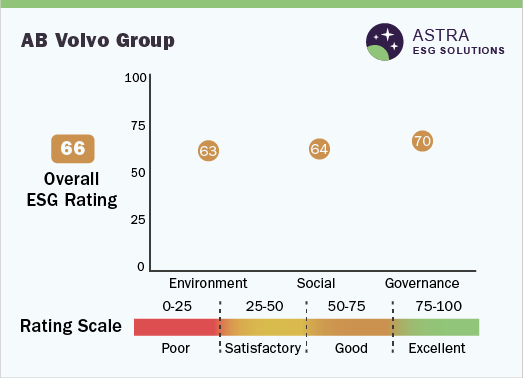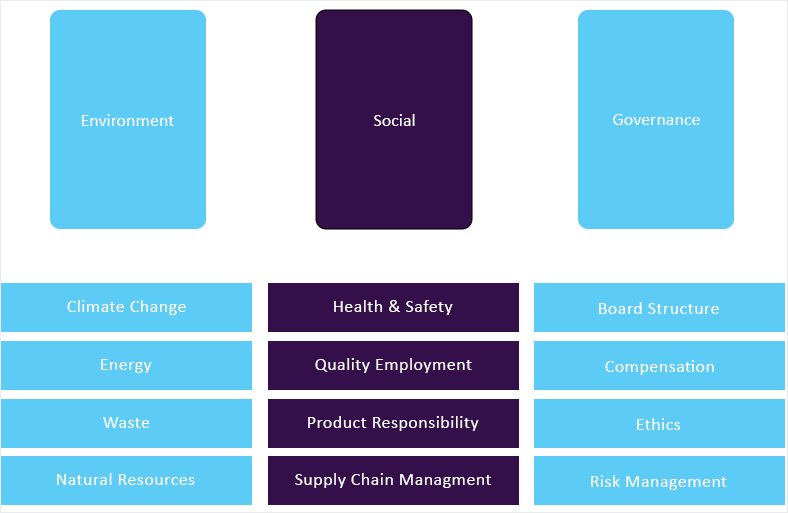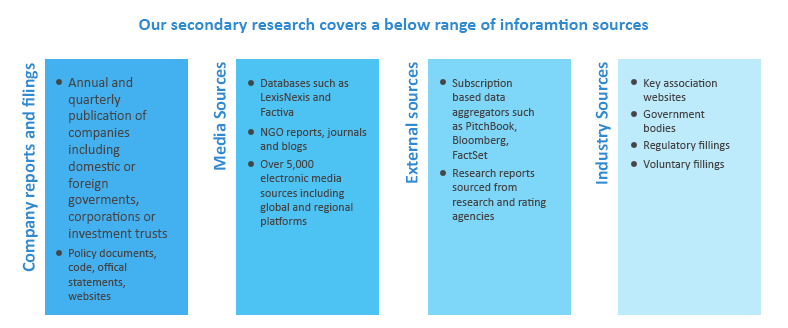Compliance, ESG Challenges & Framework, ESG Trends
- Report Summary
- Methodology
- Request for ESG Consultation
Environmental, Social, and Governance (ESG) at AB Volvo
The policies that impact the environment, social, and governance, which are made by companies, involving consumers and the government, is shaping the current trend in investments in an unprecedented manner.
Being a key leader in the automotive industry, AB Volvo, is motivated by the idea of sustainability and has built itself around the aspects of Environment, Social and Governance. It has been focusing on ESG for a decade and promoting ecofriendly way of logistics and transportation and community inclusive methods of operations. Regarding this, AB Volvo has made policies that define its core ethical values of governance, striving to make a positive impact in all the three areas of ESG.
Depletion of natural resources as well as the change in technology in the automotive industry, has led AB Volvo to adapt to sustainable technologies and policies.
ESG Trends
AB Volvo has aligned itself with the United Nations Sustainable Development Goals (UN-SDGs) and has aimed at reducing the carbon emissions by 2050. To enable this goal, AB Volvo has made changes in its production operations to reduce climate change, where it aims to reduce scope 1 & scope 2 emissions by 50% by 2030. It has aimed to reduce scope 3 emissions of the following products: reduce scope 3 emissions from trucks by 40% per vehicle km by 2030, buses by 40% per vehicle km by 2030, scope 3 emissions from construction equipment by 30% by 2030, and emissions from Volvo Penta by 37.5% by 2034. The methods used to reduce the scope 1, 2 & 3 emissions are aligned with Science-Based targets. Furthermore, the company has set up an environmental policy to accomplish the targets.

To combat climate change, the company is focused on replacing existing conventional energy source with renewable sources of energy such as wind, solar and hydropower. AB Volvo has also been working on replacing its transport with eco-friendlier powered vehicles, which are battery electric vehicles and hydrogen fuel cell vehicles (BEV’s and FCV’S) and more sustainable fuel sourced vehicles.
Introducing the method of Circular Economy into its production method, AB Volvo has pledged to reduce consumption of natural resources and made a policy in regard with this, namely Sustainable Minerals Program. Further to enable its Safety policy, which is inclusive of safe production and safety of employees, the company has banned 3000 hazardous chemicals that can be used for production.
AB Volvo has revised and inducted a Code of Conduct policy, which is inclusive of diverse work force, prohibits modern slavery and corruption and bribery, and promotes product compliance. The said policy also focuses on securing confidential information and intellectual property rights as well as prohibits insider trading and promoting human rights. To create a positive impact on the social scale, Volvo has taken up community engagement program, where it trains communities with skills. Volvo has also made health and wellbeing policy, which is inclusive of physical and mental health and promotes work life balance.
Future of ESG at AB Volvo
In 2021, AB Volvo’s revenue was USD 43.4 billion. Being one of the key leaders of the automotive industry, AB Volvo has made initiatives and policies that create positive impact on environment and society in parallel and these policies reflect the core values of the company.
Research methodology
Grand View Research (GVR) employs a holistic and robust research methodology focused on delivering precision. Our ESG key issues are selected following a thorough materiality analysis run by our taxonomy committee. We examine leading business journals relevant to the industry sector and where applicable references are made to a range of sources including regulatory agencies, trade associations, company filings, white papers, and analyst reports during the due diligence on data aggregation. In addition, a recurring theme that remains central to all our research reports remains data triangulation which aims to dive into the market from thematic context, regulation, and industry benchmarking, including SWOT analysis.
Eligibility Criteria and Company Selection
Each public company is curated by our senior researchers following a comprehensive study of their business involvement around a specific theme. The involvement extends to subsidiaries based on at least 50% holding by the parent company. Following this, we analyze fundamental financial indicators, including revenue and market capitalization to ensure a diverse set of companies that fairly represent the sector are included. Additionally, GVR researchers ensure the disclosure level of each company across the material ESG key issues.
Scoring Methodology
Each ESG metric is assigned a specific weight based on its relevance across sectors. Below are the aggregated weights across pillars, which are derived from each metric.
| Environment | Social | Governance |
| 40% | 30% | 30% |
GVR’s proprietary ESG score is calculated using a weighted average method at:
• Key issues level
• Pillar level
• Company level and,
• Theme level
Data Mining
Data is obtained and collated from diverse source points. The data collected is continuously cleansed to ensure that only validated and verifiable sources are analyzed. In addition, data is also mined from a large number of in-house syndicated research reports inventory as well as through paid databases and premium content. During this research report, we conducted multiple primary interviews across the globe supported by our Primary Research Panels through the delivery of a mix of paid and unpaid interviews. We also send and receive responses from a wide section of industry participants through a carefully crafted and comprehensive survey questionnaire. We triangulate these data into quant models and generate qualitative insights. Evolving industry dynamics that shape drivers, restraints, and pricing are also gathered. As a result, the published content includes proprietary data and meaningful insights.
Fundamental ESG data:
GVR’s ESG taxonomy committee maintains the framework and ensures it is updated quarterly considering market updates and relevance. Framework includes 65+ fundamental ESG metrics that are identified following a thorough materiality assessment. Below is GVR’s ESG Level-I framework:

Alternative ESG data:
GVR also analyzes macro-economic factors that impact or drive the growth of respective sectors. This includes
• Deep dive analysis of policy and regulatory landscape that has potential towards shaping the future of businesses
• Innovation quotient of a sector to gauge prospective evolution of a theme and related opportunities
• Investment scenario, including mergers & acquisition, funding and other deals to assess the investment appetite for a particular theme
• Other market activities, including market size, growth forecasts among others.
Information sources



